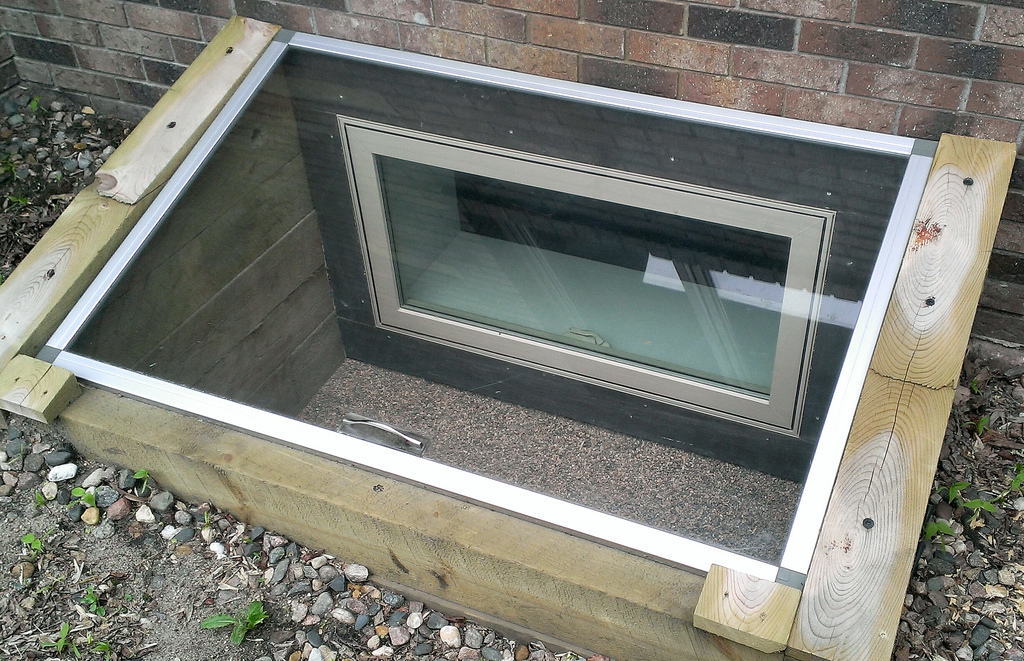Residential Egress Requirements: Understanding Safety Regulations for Windows, Doors, Staircases, and More
What are Residential Egress Requirements?
Understanding the Importance of Egress Requirements
When it comes to ensuring the safety of occupants in residential buildings, egress requirements play a critical role. These requirements outline the necessary provisions for safe exit paths in case of emergencies such as fires, natural disasters, or other life-threatening situations. By having proper egress systems in place, homeowners can significantly reduce the risk of injury or loss of life.
Legal and Safety Considerations
Complying with Building Codes and Regulations
Residential egress requirements are not just suggestions; they are mandated by building codes and regulations enforced by local authorities. These codes set the standards for construction and design, and failure to comply with them can result in penalties or even legal consequences. It is essential for homeowners to familiarize themselves with the specific egress requirements applicable in their area to ensure compliance.
Ensuring Occupant Safety
The primary objective of residential egress requirements is to prioritize the safety of occupants. In emergency situations, such as a fire, occupants need to be able to evacuate the building quickly and safely. Egress requirements specify the minimum dimensions and specifications for exit doors, windows, stairways, and other components of the escape route. These standards ensure that occupants have a clear pathway to exit the building and reach a safe location in a timely manner.
Preventing Trapped Individuals
One of the aspects of egress requirements is to prevent individuals from becoming trapped inside a residential building during an emergency. These requirements mandate the presence of accessible exits on each floor, as well as emergency escape windows in certain areas such as bedrooms or basement areas. By providing multiple exit options, egress requirements increase the chances of individuals being able to escape in case one exit becomes unusable.
Enabling Access for Emergency Responders
Egress requirements not only benefit the occupants of a residential building but also enable access for emergency responders such as firefighters or paramedics. These requirements ensure that emergency personnel can enter the building quickly and effectively, allowing them to carry out their life-saving duties efficiently. By having clear and accessible exit paths, egress requirements facilitate emergency response efforts.
In conclusion, understanding and adhering to residential egress requirements is important for the safety and well-being of occupants. Compliance with these requirements not only ensures legal conformity but also provides peace of mind knowing that proper measures are in place to protect against emergencies. By prioritizing egress requirements, homeowners can create a safer living environment for themselves and their loved ones.
Window Egress Requirements
These requirements dictate the minimum standards for window openings, their height from the floor, accessibility, and operation. Understanding these regulations is essential for homeowners, builders, and architects alike. In this section, we will delve into the specifics of window egress requirements.
Minimum Window Opening Size
One of the primary considerations for window egress requirements is the minimum opening size. This specification ensures that occupants can easily escape through the window in case of an emergency. According to building codes, the minimum clear opening width should be no less than 20 inches, while the minimum clear opening height should be no less than 24 inches. These dimensions ensure that individuals of various sizes can comfortably pass through the window.
Maximum Height from the Floor
In addition to the minimum opening size, window egress requirements also address the height of the window above the floor. This criterion ensures that occupants can access the window without difficulty during an emergency situation. According to building codes, the bottom of the window opening should be no more than 44 inches above the floor. This height ensures that even individuals with limited mobility can easily reach and escape through the window.
Accessibility and Operation Requirements
Apart from the physical dimensions, window egress requirements also encompass accessibility and operation specifications. These guidelines guarantee that occupants can effectively utilize the window as an escape route when needed. Building codes stipulate that windows designated as egress windows should be easily accessible without the use of keys, tools, or special knowledge. Additionally, these windows should be operable from the inside without requiring excessive force or complex maneuvers.
Ensuring the proper operation of egress windows is for their functionality during emergencies. Homeowners should regularly inspect and maintain these windows to ensure smooth operation. Lubricating hinges and tracks, replacing damaged or worn-out parts, and testing the window’s functionality periodically are all essential steps to keep them in optimal condition.
By complying with window egress requirements, homeowners can ensure the safety and well-being of their family members or occupants. It is important to consult local building codes and regulations to ensure full compliance with specific jurisdiction requirements. Involving professionals, such as architects or contractors, in the design and installation process can help ensure that all egress requirements are met.
Residential Egress Requirements: Door Egress Requirements
When it comes to the safety of residential properties, ensure that all necessary egress requirements are met. One of the key components of residential egress is the proper design and installation of doors. In this section, we will explore the specific requirements for door egress, including minimum door width, door swing and clearance, as well as accessibility and operation requirements.
Minimum Door Width
To meet residential egress requirements, the minimum width of a door depends on the occupancy and the location within the house. Generally, interior doors should be at least 32 inches wide, while exterior doors should be a minimum of 36 inches wide. These dimensions allow for easy passage and accommodate individuals with mobility aids, such as wheelchairs or walkers.
Door Swing and Clearance
In addition to the door width, the swing and clearance of a door are important considerations for egress requirements. Doors should swing in the direction of egress, allowing for a smooth and unobstructed exit. Moreover, it is to provide sufficient clearance around the door to ensure easy passage without any hindrances. The recommended clearance for doors is a minimum of 18 inches on the pull side and 12 inches on the push side.
Accessibility and Operation Requirements
Residential egress requirements also emphasize accessibility and operation aspects of doors. This includes features that ensure doors can be opened and closed easily by individuals with disabilities or limited mobility. Lever-style door handles are often preferred over traditional doorknobs, as they are easier to grasp and manipulate. Additionally, it is important to ensure that door hardware, such as locks and latches, can be operated with minimal effort.
Moreover, doors should be equipped with proper lighting to ensure visibility, especially during emergencies. Adequate illumination, such as hallway lighting or motion-activated lights, can significantly enhance the safety and ease of egress.
In summary, meeting door egress requirements in residential properties is for the safety and accessibility of occupants. By considering factors such as minimum door width, door swing and clearance, as well as accessibility and operation requirements, homeowners can ensure that their doors comply with the necessary standards. By prioritizing these requirements, residential properties can enhance the overall safety and ease of egress for all occupants, regardless of their mobility or abilities.
Staircase Egress Requirements
Staircases are not just a means of moving between floors; they serve as a potential escape route in case of emergencies. In this section, we will delve into the various aspects of staircase egress requirements, including minimum staircase width, step height and depth, as well as handrail and guardrail specifications.
Minimum Staircase Width
The width of a staircase is an essential factor in ensuring safe and efficient movement. The minimum width requirement for residential staircases is typically determined by local building codes. While specific regulations may vary, the general guideline is to provide a minimum width of 36 inches for residential buildings. This width allows for comfortable passage and facilitates the safe evacuation of occupants during emergencies.
Step Height and Depth
The dimensions of individual steps also play a vital role in ensuring safe and comfortable stair usage. When designing a residential staircase, it is important to adhere to the recommended step height and depth. The standard step height ranges from 7 to 7.5 inches, while the step depth usually falls within the range of 10 to 11 inches.
Maintaining consistent step dimensions throughout the staircase helps users anticipate and adapt to each step, reducing the risk of trips and falls. Ensure that the steps have a uniform rise and run, providing a smooth and stable transition between each step.
Handrail and Guardrail Specifications
Handrails and guardrails are essential safety features that provide support and prevent accidental falls. Handrails are typically installed on one or both sides of a staircase, while guardrails are placed along open sides, such as landings or balconies.
The height of handrails should be consistent and set at a level that is easy for users to grip comfortably. The general guideline is to install handrails at a height between 34 and 38 inches. This range accommodates individuals of different heights and provides a secure grip for users of all ages.
Guardrails, on the other hand, are designed to prevent accidental falls from elevated areas. They should be at least 36 inches in height, measured from the leading edge of the tread or floor. Additionally, the spacing between guardrail balusters or vertical bars should not exceed 4 inches to prevent small children from getting stuck or falling through.
By adhering to these handrail and guardrail specifications, you can ensure the safety and well-being of occupants within residential buildings.
Remember, when it comes to staircase egress requirements, it is important to comply with local building codes and regulations. These guidelines provide a baseline for safety and ensure that residential staircases meet the necessary standards. By considering the minimum staircase width, step height and depth, as well as handrail and guardrail specifications, you can create a staircase that is both functional and secure.
Basement Egress Requirements
When it comes to basement egress requirements, there are several important factors that homeowners need to consider. Ensuring that your basement has the proper egress requirements in place is not only a matter of compliance with building codes but also a safety measure for you and your loved ones. In this section, we will delve into the specific requirements for basement egress, including window well requirements, window size and accessibility, as well as emergency escape and rescue openings.
Window Well Requirements
Window wells are designed to prevent soil and debris from blocking the basement window and allow for easy access to the window from the outside. In order to meet the necessary egress requirements, window wells must adhere to certain guidelines.
Firstly, the window well should have a minimum horizontal projection of 36 inches. This provides enough space for an individual to maneuver around the window and climb out safely. Additionally, the window well should have a minimum width and length of 36 inches, ensuring enough room for a person to fit comfortably.
Moreover, it’s important to ensure that the window well is equipped with a secure and durable cover or grate. This prevents accidental falls into the well while still allowing natural light to enter the basement. The cover or grate should be capable of supporting the weight of an adult and should be easily removable from the inside to ensure a quick escape.
Window Size and Accessibility
The size and accessibility of the basement window is other aspects to consider when meeting egress requirements. The window should be of sufficient size to allow for easy exit and entry during an emergency situation. The minimum clear opening should be at least 20 inches wide, 24 inches high, and have a total clear opening of at least 5.7 square feet.
It’s important to note that the bottom of the window opening should not be higher than 44 inches from the floor. This ensures that even individuals with limited mobility can easily access and exit through the window.
To further enhance accessibility, it’s recommended to have a window with a swinging sash that opens easily and provides ample space for passage. Additionally, having a window with a low sill height allows for easier escape without the need for climbing over obstacles.
Emergency Escape and Rescue Openings
Emergency escape and rescue openings are specifically designed to provide a safe means of exit from a basement in the event of an emergency. These openings are typically larger than standard basement windows and are strategically placed to allow for easy access to the exterior.
In order to meet the egress requirements, emergency escape and rescue openings should have a minimum clear opening of 5.7 square feet, with no dimension less than 20 inches. This ensures that individuals of all sizes can safely exit through the opening.
Furthermore, these openings should have a maximum sill height of 44 inches from the floor. This ensures that even those with limited mobility or individuals carrying children can easily access and escape through the opening.
It’s worth mentioning that emergency escape and rescue openings should be easily operable from the inside without the use of keys or tools. This ensures a quick and efficient exit during an emergency situation.
Other Residential Egress Requirements
Having properly sized windows and doors for easy escape in case of an emergency, consider other important safety measures. This section will cover three vital aspects of residential egress requirements: Emergency Lighting and Signage, Smoke and Carbon Monoxide Detectors, and Fire Extinguisher Placement.
Emergency Lighting and Signage
Emergency lighting and signage play a critical role in ensuring the safety of residents during emergency situations. In the event of a power outage or fire, it’s essential to have a reliable backup lighting system. This includes strategically placed emergency lights that provide sufficient illumination along exit paths and stairwells.
Clear and visible signage is necessary to guide residents to the nearest exits. By having well-lit exit signs with arrows pointing in the right direction, occupants can quickly locate the safest way out of the building. These signs should be easily recognizable and placed at eye level to ensure maximum visibility.
Smoke and Carbon Monoxide Detectors
Smoke and carbon monoxide detectors are essential for early detection of fire and harmful gas leaks, respectively. These devices serve as an early warning system, alerting residents to potential dangers and giving them ample time to evacuate safely.
Proper placement of smoke and carbon monoxide detectors. It is recommended to install smoke detectors on every level of the home, including inside each bedroom and outside sleeping areas. Carbon monoxide detectors should be placed near fuel-burning appliances and outside every sleeping area as well. Regular maintenance and testing of these devices are equally important to ensure they are in proper working condition.
Fire Extinguisher Placement
Fire extinguishers are an essential tool to combat small fires and prevent them from spreading. Proper placement of fire extinguishers throughout the home is for quick accessibility in case of an emergency.
Ideally, at least one fire extinguisher should be located on each level of the home. It is recommended to place them near high-risk areas such as the kitchen, garage, or workshop. Fire extinguishers should be mounted in an easily visible and accessible location, away from potential obstructions.
Remember, having fire extinguishers alone is not enough; residents must also be trained on how to use them effectively. Consider providing basic fire safety training to all occupants, educating them on the proper operation of fire extinguishers and when it is safe to use them.
By adhering to these additional residential egress requirements, you can significantly enhance the safety of your home. Emergency lighting and signage, along with properly placed smoke and carbon monoxide detectors, and easily accessible fire extinguishers, are essential elements in safeguarding your household and ensuring a swift and safe evacuation in case of an emergency.








